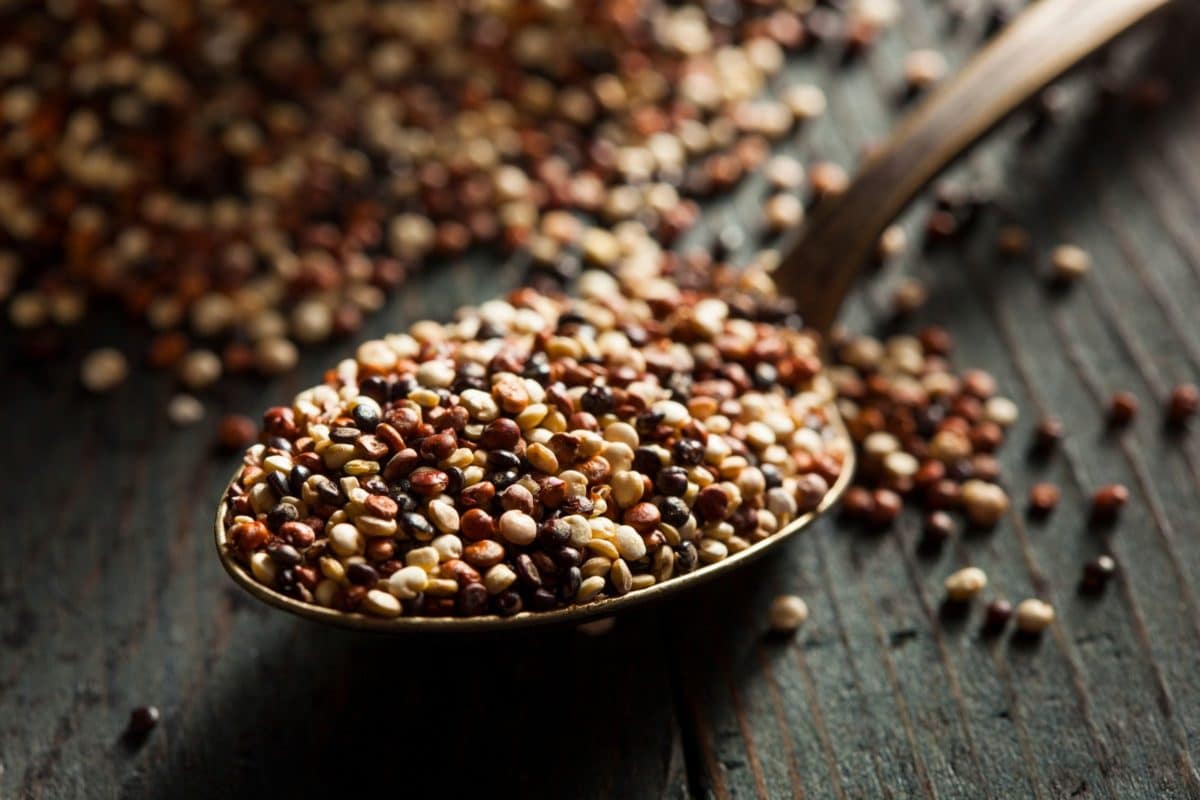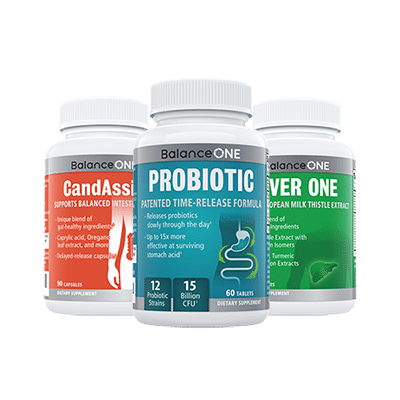8 Remarkable Health Benefits of Quinoa

Pronounced “keen-wah”, quinoa is an ancient superfood that once fed the warriors of the Inca people. Although often referred to as a grain, quinoa is officially a seed. It belongs to a group of pseudo-cereals, which means it’s neither a cereal nor a grain. In fact, it’s more closely related to spinach and beets.
Quinoa can be cooked in the same way as rice and has a delicious nutty flavor. Its nutritional benefits make it an excellent alternative to common grains such as wheat and rice, and it can cater to any dietary requirements or tastes!
Quinoa is not necessarily a low-carb food, but it does contain fewer carbs than brown rice or pasta. That means you can include it in a low-carb diet, in small amounts, as long as you watch your overall carb intake.
Remember that the goal of the Candida diet is not to eliminate carbohydrates completely – that leads to ketosis which can weaken your immunity and can be counter-productive.
Quinoa also has a healthy fat and protein content that helps your body to process those carbohydrates more slowly.
Here are a few reasons why a little quinoa in your diet would probably be a good thing 🙂
Table Of Contents
1. Good source of protein
Quinoa is one of the most protein-rich plant foods available. It’s actually a complete protein, which means it contains all nine essential amino acids.
This one of few seeds to have an excellent ratio of proteins to carbohydrate. The ‘germ’ of quinoa constitutes nearly 60 percent of the entire grain. This is significantly higher than even wheat germ, which only constitutes three percent of the kernel.
For vegans and vegetarians, quinoa is an excellent option for boosting their protein intake.
2. Lower in carbs
A ½-cup serving of cooked quinoa contains around 110 calories, including 17g of net carbs, 3g of fiber, 4g of protein and 2g of fat.
While this is a higher portion of carbs than is generally allowed on a strict keto diet, it’s still lower than pasta or rice. For example, a ½-cup serving of brown rice contains 22g carbohydrates, and two pieces of whole wheat bread contain 24g carbohydrates.
A serving of quinoa is also rich in many other nutrients, which makes it a healthier energy source than refined carbs that contain ‘empty calories’. You can even use it as a healthy, lower-carbohydrate substitute for breadcrumbs in meatballs or for rice in a side dish.
3. Rich in minerals
Quinoa contains iron, copper, thiamin and vitamin B6. It’s an excellent source of magnesium, phosphorus, manganese and folate.
Manganese is an antioxidant, which helps to prevent the mitochondria of your cells being damaged by free radicals, which can happen during energy production. Manganese also protects red blood cells and other cells from being injured by free radicals.
A “good source” means that one serving contains at least 10% of recommended daily intake of that nutrients. An ‘excellent source’ means that each serving provides at least 20 percent of the daily value of that nutrient.
4. Packed with fiber
The high fiber content of the quinoa seed makes it excellent for the Candida Diet, as it helps to maintain gut health and keep your digestive system moving waste out the body.
Quinoa’s fiber content is almost twice that of common grains. Fiber helps to keep blood sugar levels in check and help you feel more satisfied after eating, which means you’re less likely to suffer sugar cravings later in the day. This is turn means you’re less likely to break the diet and end up eating more than you need.
Fiber also helps to keep the digestive tract healthy, supporting the balance of beneficial bacteria in the colon.
5. Energy-booster
Quinoa is a good source of plant-based iron. Iron is essential for your body’s production of hemoglobin, as well as helping red blood cells transport oxygen around the body. Your muscles need this supply of oxygen in order to contract and relax properly.
Iron is necessary for proper brain function too: your brain uses about 20% of the oxygen in your blood.
Quinoa is also rich in riboflavin, aka vitamin B2. B2 boosts energy production in the body and supports healthy functioning of brain cells and muscle cells. Quinoa has a low-glycemic index, which means it provides slow-releasing energy throughout the day.
6. Helps in growth and repair
One of the many important amino acids in quinoa is lysine. In fact, quinoa contains more lysine than most other plant-based foods.
Lysine is necessary for the synthesis of many proteins in the body, as well as helping with the growth and repair of different tissues.
One particular type of quinoa – Chenopodium quinoa – contains a whopping 442mg of l-lysine. This is actually more than a fifth of the daily requirement and will go a long way in supporting your body’s demands for lysine.
Lysine also helps your body to absorb calcium, burn fat and maintain the health of skin, tendons, bones and cartilage. Other sources of lysine are mostly animal-based products, such as meat, cheese and dairy products.
7. Magnesium-booster
Most of us are low in magnesium, an important mineral required for over 300 biochemical processes in the body.
Magnesium helps in muscle relaxation and nervous system support, as well promoting healthy blood sugar control. Regular intake of magnesium intake is also associated with a lower Type II diabetes risk. About a third of your daily magnesium needs are a cup of quinoa.
Other health benefits of magnesium include helping in the transmission of nerve impulses, regulating body temperature, promoting healthy detoxification, supporting energy production, and the maintaining healthy teeth and bones.
It’s even been suggested that quinoa’s combined content of manganese, magnesium and phosphorus provides an excellent defense against bone disorders such as osteoporosis.
8. Gluten-free
Those who are gluten-intolerant or have Celiac disease will find quinoa to be an excellent alternative to other grains.
It’s a nutritionally-dense food source that provides far more beneficial vitamins and minerals than other grains or seeds.
One study showed that people who swapped their primary whole grain source to quinoa were still able to meet their daily requirements for protein, iron, calcium and fiber.
Other research showed that celiac patients are able to tolerate quinoa on a daily basis without any harmful effects.
Nutritionists recommend quinoa as a primary grain instead of other gluten-free alternatives, as it provides a more balanced source of nutrients than other ‘empty’ starches.
How to Use Quinoa in Your Meals
Here are a few delicious recipes ideas that incorporate quinoa:
Quinoa Buckwheat Crackers
Thia Quinoa
Quinoa Falafel
Quinoa Rutabaga Patties
Quinoa Meatloaf
Curried Chicken Bowl

3-Month Candida Elimination Kit Start Your 3-month Candida Cleanse
This Candida Kit contains all the supplements recommended on the Candida Diet:
- LIVER ONE to process and remove the toxins created by Candida.
- CANDASSIST to inhibit and weaken the Candida colonies in your gut.
- PROBIOTIC to replace the Candida yeast with probiotic bacteria.
Plus... the CANDIDA DIET RECIPE BOOK with 50+ low-sugar recipes

Leave a Reply